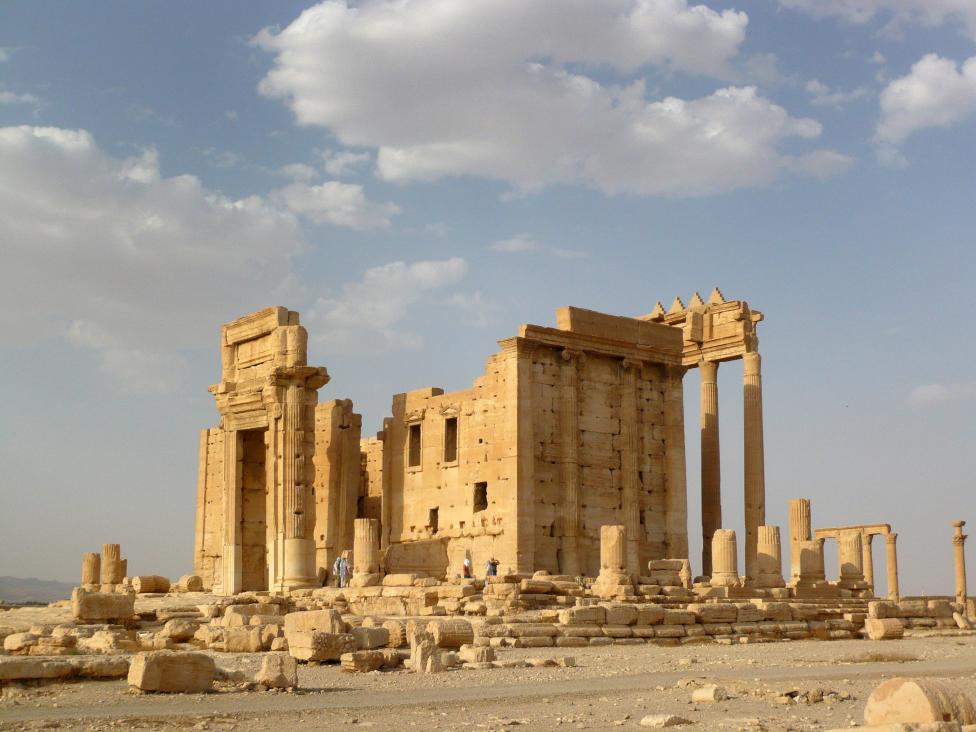Palmyra- ISIS has reduced most of the Palmyra’s archeological sites into rubble. Terrorist extremists fled the historical city leaving behind historical columns and statues, which had stood there for thousands of years, broken down into scattered bulks of rocks.
On the walls of what was left of Palmyra’s Temple of Bel, a temple dubbed the “bride of the Syrian desert” in reference to its architectural splendor, extremists used a large font to inscribe “ISIS, no civilians or brothers allowed in,” in black.
Temple of Bel is one of Palmyra’s most valuable assets; the site is estimated to have taken a century in construction till it has been fully established. As from this day on, the temple has been transformed from a holy sanctuary dedicated to the shrine’s deity into debris and wrecked boulders that now represent the archeological pass-down of terrorism.
Only the temple’s gates, entrance and outer courtyards have survived ISIS. Throughout the shrine’s corridors piled beige rocks- a color consistent with the surrounding barren desert- pose a new decorative feature to the place.
Bel’s old fashioned roofless hallway had it sixteen meters tall pillars knocked down, to lay down on desert sand with whatever was left of design patterns surviving in the fragments of tossed rubble.
Syria’s antiquities Chief Mamoun Abdelkarim tells Agence France-Presse (A.F.P) “of course the temple of Bel will not be the same.”
Russian troopers- who had a major role in the Syrian regime regaining control over the heritage city- now escort reporters coming in from Russia in tours around the ruins of Corinthian columns, temples and royal cemeteries.
The Roman theatre in ancient Palmyra remained intact, however, now has the grotesque murder ISIS staged there, as children called “Caliphate cubs” executed twenty five ISIS soldiers using rounds of bullets.
Abdelkarim sent out a call to all archeologists around the world to travel to Palmyra and help with his team’s mission to restore what stands to be a part of global human culture.
The wreckage is not cut short to the ancient Palmyra’s vicinity, battle remnants are found even in the residential part of the city. ISIS extremists left nothing to what it was, changing churches into centers of recruitment and the courthouse into a prison.
The ISIS prison basement floor had one of the room doors titled “interrogation room”. Beds were laid out on a large hall’s floor. On the hall walls prisoners left their last letters to their loved ones, one of which was a large heart with “Farah” written inside.
One of the former prisoners abu Mahmoud says: “I was a municipality employee, and I have spent 14 days in this prison.”
“Saudis, Iraqis and Tunisians have subjected me to interrogations with a sward pulled out to my neck,” he said.
“I got lucky and survived, but I have friends, other employees, who were executed and thrown out in the desert to the dogs,” abu Mahmoud added.
